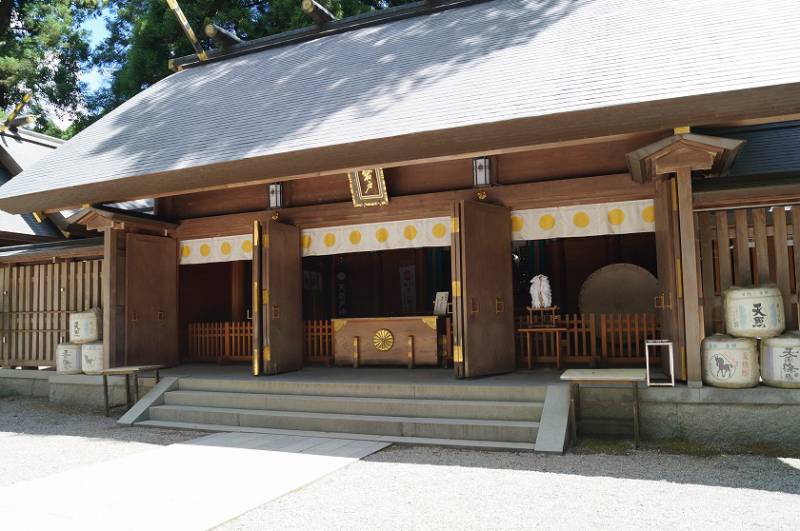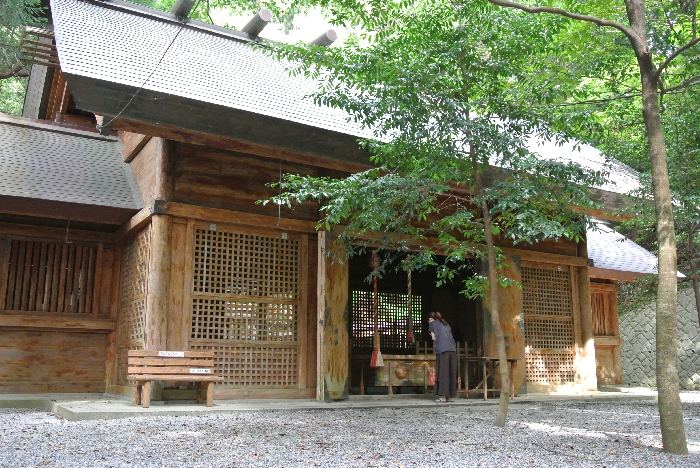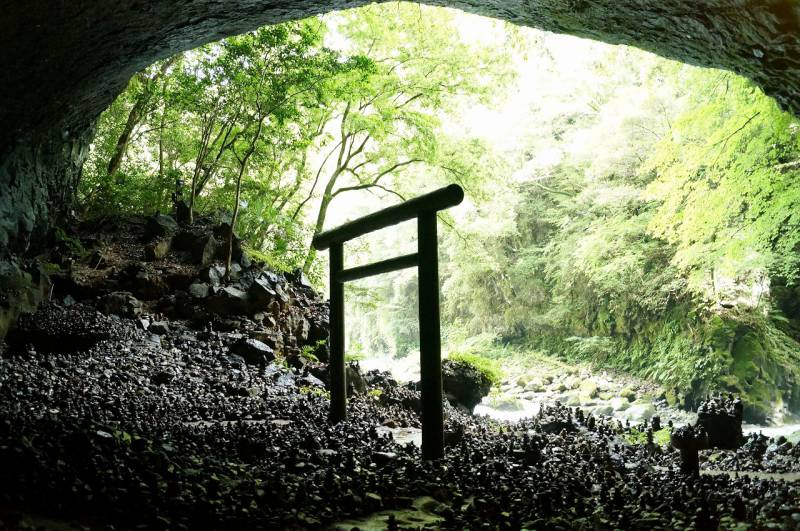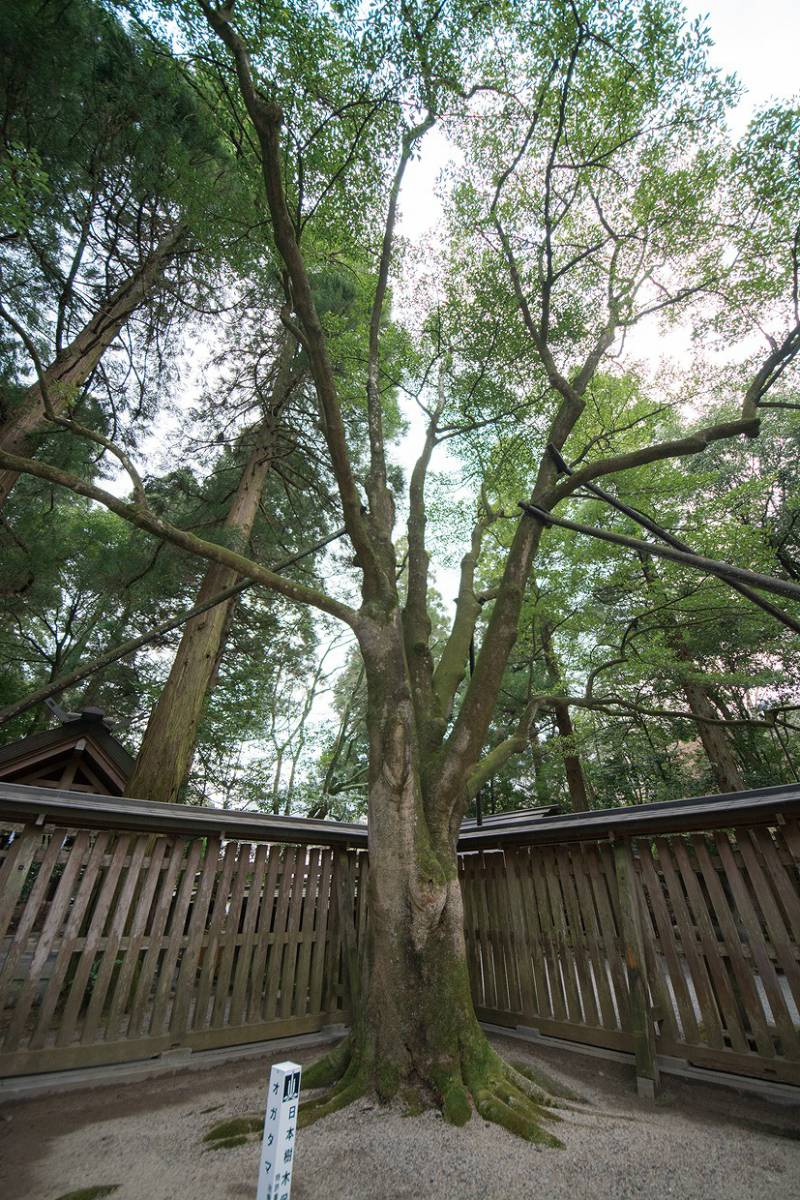2019 / 07 / 08
Sightseeing
Amano Iwato Shrine
Amano Iwato Shrine

Amano Iwato (Heavenly Stone Cave) Shrine is a shrine dedicated to Amaterasu Omikami, the sun kami deity who rules the heavens. The shrine has two separate sanctuaries: the West Sanctuary (Nishi Hongu) and the East Sanctuary (Higashi Hongu). The West Sanctuary honors Amaterasu as she was known in her childhood, under the name of Ohirume no Mikoto. It marks the location believed to be described in a famous Japanese myth in which Ohirume (Amaterasu) hid herself in a cave, plunging the world into darkness, and was lured back out with a staged festival hosted by the kami deities of the Heavenly Realm. A short trail from the West Sanctuary leads to a riverside cave called Amano Yasukawara, where the kami deities of the Heavenly Realm are thought to have gathered to plan how to lure Amaterasu out of hiding.
The East Sanctuary, on the other hand, enshrines Amaterasu as she is known following her re-emergence from hiding, honoring the place where Amaterasu is thought to have once resided on earth.
The East Sanctuary, on the other hand, enshrines Amaterasu as she is known following her re-emergence from hiding, honoring the place where Amaterasu is thought to have once resided on earth.
East Sanctuary (Higashi Hongu)

The East Sanctuary became a part of Amano Iwato Shrine in 1970. Before this, it was known as Ujigami Shrine. Amaterasu Omikami is venerated here, as this is the first place she was believed to have resided after re-emerging from Amano Iwato cave. It is uncertain how long a shrine has been present on this site, but it is said that an existing shrine was rebuilt here in 812 by the military commander Oga Koremoto (dates unknown), who had a dream that so frightened him he dedicated himself to the worship of Amaterasu. The shrine was rebuilt again in 1707, because the structure had burned down while the nation was gripped by civil war over a century earlier.
A rotating statue of Ame no Uzume no Mikoto, the kami deity whose dancing helped lure Amaterasu out of hiding, is near the foot of the path that ascends to the Main Sanctuary.
A rotating statue of Ame no Uzume no Mikoto, the kami deity whose dancing helped lure Amaterasu out of hiding, is near the foot of the path that ascends to the Main Sanctuary.
Far Precinct and West Sanctuary (Nishi Hongu)
While the East Sanctuary honors Amaterasu Omikami as she is known after she re-emerges from the sacred cave, the West Sanctuary honors her as she was in her childhood. During this time, Amaterasu was known as Ohirume no Mikoto. The Sanctuary venerates her through an embodiment: the believed location of Amano Iwato, the cave where Amaterasu once hid herself and her light from the world. Amano Iwato is considered sacred, so it cannot be approached directly, but during guided tours it can be viewed from the Far Precinct, which directly faces it across the river.
Before entering the Far Precinct, one might notice a large magnolia tree called the ogatamanoki. This tree was designated a natural monument in 1969. It is said that the deity Ame no Uzume held branches from this tree as she danced in front of Amaterasu’s cave. The bells used in the theatrical Shinto dance kagura are thought to derive from the shape of the red fruit that blossoms from ogatamanoki in the autumn.
Near the parking lot of the West Sanctuary is a statue of Tajikarao no Mikoto, a kami deity of great strength. According to Japanese mythology, he helped bring light back to the world by throwing open the door to Amaterasu’s cave when she peeked out. This statue depicts his great feat, which is often demonstrated in kagura performance.
Before entering the Far Precinct, one might notice a large magnolia tree called the ogatamanoki. This tree was designated a natural monument in 1969. It is said that the deity Ame no Uzume held branches from this tree as she danced in front of Amaterasu’s cave. The bells used in the theatrical Shinto dance kagura are thought to derive from the shape of the red fruit that blossoms from ogatamanoki in the autumn.
Near the parking lot of the West Sanctuary is a statue of Tajikarao no Mikoto, a kami deity of great strength. According to Japanese mythology, he helped bring light back to the world by throwing open the door to Amaterasu’s cave when she peeked out. This statue depicts his great feat, which is often demonstrated in kagura performance.
Amano Yasukawara

About a ten-minute walk along the Iwato River from the West Sanctuary is the riverside Amano Yasukawara cave. This is where the many kami deities of the Heavenly Realm are believed to have discussed how to lure the sun deity Amaterasu out from hiding and return light to the world. It was here the deities decided to create a festive atmosphere.
In the past, there was only a small shrine here and no path, but now there is both a large shrine and a shrine gateway. At some point, visitors began to stack stones around the cave floor as a form of wish-making. The stone stacks have grown tall, creating an atmosphere that feels spiritual. It is important for visitors to remember that these high piles of stones are precious prayers, and to tread the area carefully.
In the past, there was only a small shrine here and no path, but now there is both a large shrine and a shrine gateway. At some point, visitors began to stack stones around the cave floor as a form of wish-making. The stone stacks have grown tall, creating an atmosphere that feels spiritual. It is important for visitors to remember that these high piles of stones are precious prayers, and to tread the area carefully.





